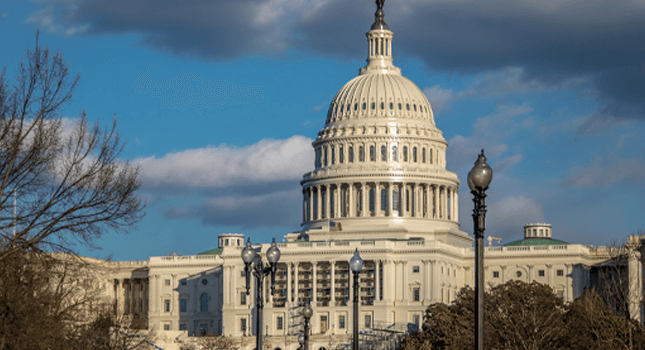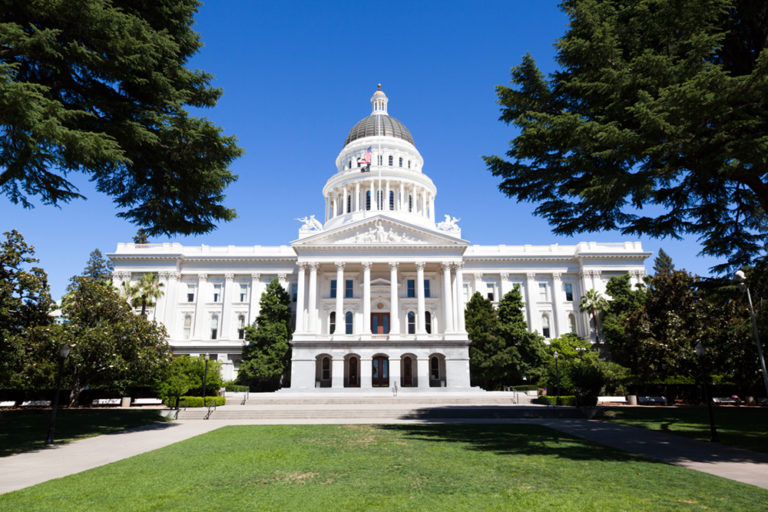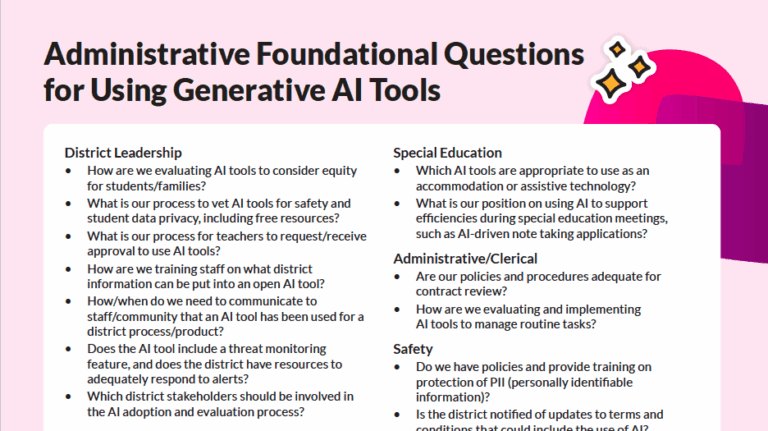This resource is provided by ACSA Partner4Purpose Lozano Smith.
In 2019, the California Legislature adopted the FAIR MAPS Act, which created strict procedures that cities and counties must follow when redrawing their election district boundaries. Assembly Bill (AB) 764 expands the FAIR MAPS Act to now also apply to school districts, community college districts, special districts, and county boards of education. AB 764 also creates strict guidelines that local agencies must follow when either (1) transitioning from at-large to by-trustee area elections (Districting) or (2) redrawing existing trustee area boundaries (Redistricting).[1]
AB 764 becomes effective January 1, 2024. Below are the key provisions of the new law.
Impacts to Both Districting and/or Redistricting
Additional Requirements for Map Creation and Reporting Requirements
- Governing boards are prohibited from considering where incumbent board members live when adopting a trustee area map. (Elec. Code, § 21130, subd. (d).)
- Governing boards must adhere to stringent criteria, including geographical continuity, communities of interest, integrity of local areas, natural or artificial boundaries, and compactness, when drawing trustee area map options. (Elec. Code, § 21130, subd. (c)(1)-(5).)
- Governing boards are required to create and publish additional reports that are currently not required, including an analysis for a majority-minority trustee area, release of racially polarized voting analysis results, and a final report within 21 days of adopting the map. (Elec. Code, § 21130, subd. (b)(1)-(2), (f).) Note that the requirement for a final report is not applicable to local agencies with a population of fewer than 250,000 residents.
Additional Requirements for Transparent and Inclusive Procedures[2]
- Public Notice: Local agencies must post notices at least five days before public hearings or workshops. (Elec. Code, § 21160, subd. (e).)
Meeting Times/Dates: Of the required public hearings, governing boards must schedule at least two on weekends, or after 6 p.m. on weekdays, and must maintain a fixed time for hearings. (Elec. Code, § 21150, subds. (f), (i).) - Public Comment: Governing boards must allow live public comment at each hearing, in-person and remotely, with accessible call-in or internet-based options. (Elec. Code, § 21150, subd. (h).).
- Recordings: Governing boards must make recordings or summaries of workshops and hearings available at least 72 hours before the first of the final two workshops or public hearings. (Elec. Code, § 21160, subd. (g)(2)(A).)
- Translation: Governing boards must offer live translation upon request, made at least 72 hours in advance (or 48 hours if less than five days’ notice is given) for applicable languages during workshops or hearings. (Elec. Code, § 21160, subd. (d).)
- Map Publishing: Local agencies must publish maps at least seven days before adoption, including specific demographic data for each proposed election district. (Elec. Code, § 21160, subd. (f)(1) and (f)(2).)
- Webpage: Local agencies must maintain a webpage for its districting or redistricting process for at least 10 years, with several requirements. (Elec. Code, § 21160, subd. (i).)
Impacts to Redistricting Process Only[3]
In order to increase awareness and involvement of local residents, AB 764 requires local agencies to perform the following steps in connection with the redistricting process.
- Adopt a redistricting public education and outreach plan at least four weeks before the first informal workshop or hearing. (Elec. Code, § 21160, subd. (b).)
- Publish a preliminary draft of the redistricting public education and outreach plan, ensuring it is available to the public 14 days before adoption. (Elec. Code, § 21160, subd. (b).)
- Conduct one pre-map informal workshop at which staff or board members should inform the public about the process, and seek input from the public. (Elec. Code, § 21150, subd. (a).)
- Hold two pre-map hearings. (Elec. Code, § 21150, subd. (d)(1).)
- Conduct two or three map consideration hearings. (Elec. Code, § 21150, subds. (c)(1), (d)(2).)
Takeaways
The provisions of AB 764 significantly change the redistricting processes under the California Voting Rights Act and extend certain requirements to educational agencies that had previously been exempt from the FAIR MAPS Act. Moving forward, the process will include many additional steps before, during, and after the redistricting process. Additionally, local boards no longer have flexibility as to map drawing criteria and instead are required to follow the statutory criteria. Finally, the process will be different depending on the size of the jurisdiction, so care must be taken to ensure the process applicable to the size of your jurisdiction is followed.
If you have questions about AB 764, the redistricting process, or the CVRA, please contact an attorney at one of our eight offices located statewide. You can also subscribe to our podcast, follow us on Facebook, Twitter and LinkedIn or download our mobile app.
[1] Note that once a local agency transitions to by-trustee area elections, it is required to revisit the map after every decennial census as part of the redistricting process.
[2] Note that Elec. Code, § 21150, subds. (f) to (h) inclusive, do not apply to special districts or small education districts. Elec. Code, § 21160, subds. (b) to (g), inclusive, paragraphs (2) and (3) of subdivision (h), and paragraphs (4) to (10), inclusive, of subdivision (i) do not apply to special districts or small education districts. Subdivision (i) does not apply to special districts or small education districts that do not have a website for the jurisdiction and are not legally required to establish such a website.
[3] Note that steps 1-3, and 5 are not applicable to small education districts or special districts. Small education districts are those with a population of 250,000 or less. Additionally, note that all of the steps listed in this section apply when a districting body adopts new election district boundaries, including when a local jurisdiction redistricts following the federal decennial census or between federal decennial censuses, but not including when a legislative body transitions from being elected at-large to elected by districts or from districts.

































